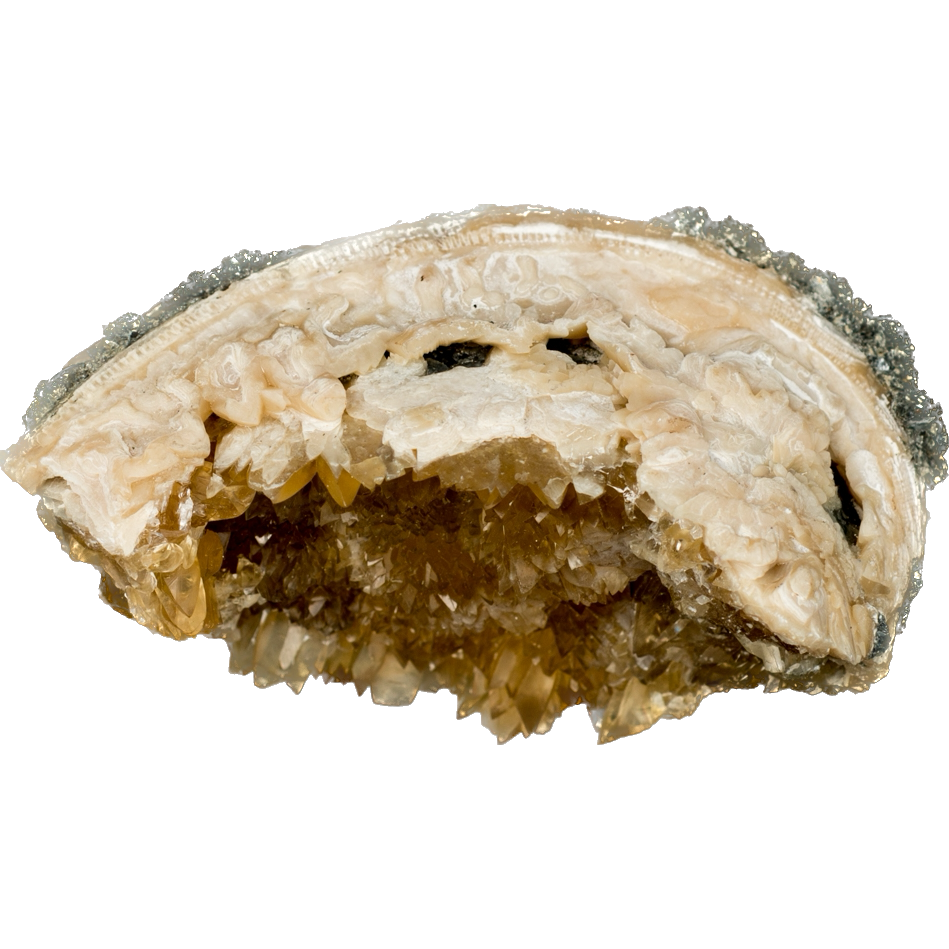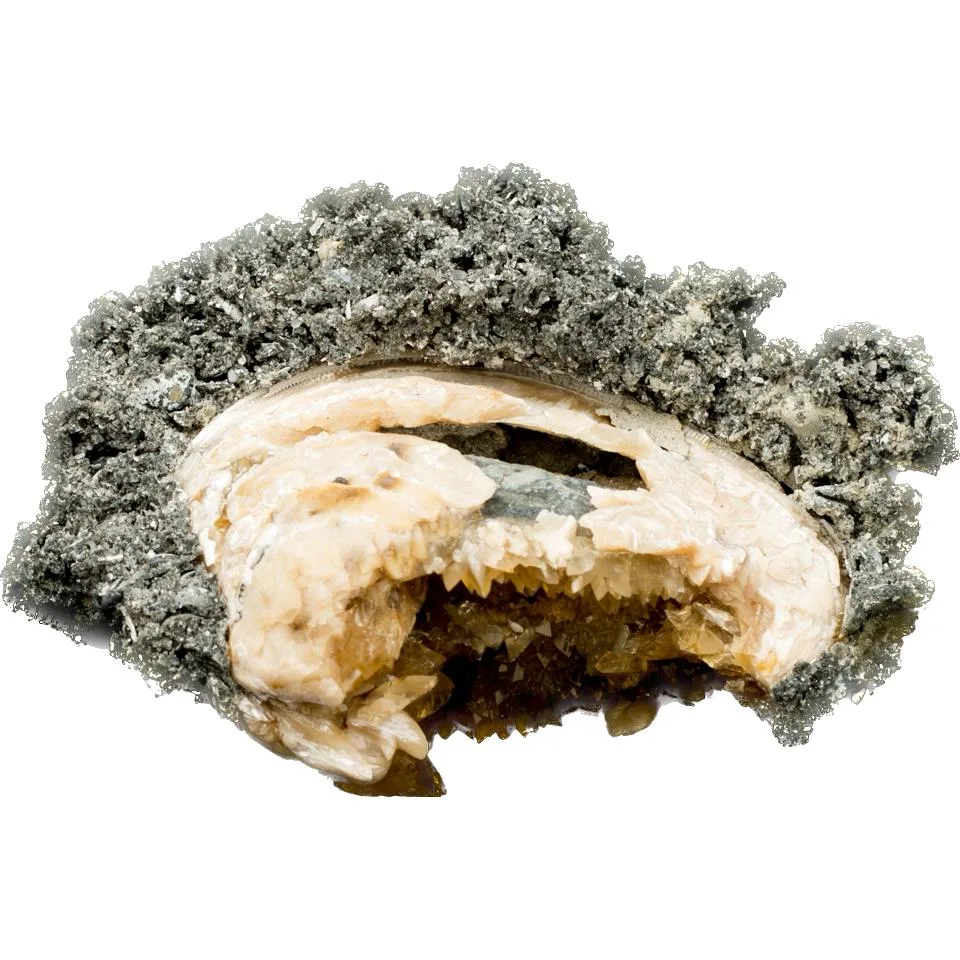Unearthing History: The Fascinating World of Mercenaria Permagna Clams from Florida

The Mercenaria permagna clam is a fascinating fossil that provides valuable insights into Florida’s prehistoric marine environment. These fossilized clams, which are often found with beautiful crystals inside, offer a unique glimpse into the geological past of the region. This article will explore various aspects of the Mercenaria permagna clam, including its discovery, formation, and the striking crystals it sometimes contains. We’ll delve into where these fossils are typically found in Florida and discuss the processes that lead to their preservation and crystallization.
History of Discovery
The Mercenaria permagna clam is a species of bivalve mollusk that thrived in the warm, shallow seas covering what is now Florida during the Pleistocene epoch, approximately 2.6 million to 11,700 years ago. Fossil enthusiasts and paleontologists have been unearthing these clams for many years, with significant finds documented in various parts of the state. Their well-preserved shells and the occasional presence of internal crystals make them a prized find among collectors and researchers alike.
Identifying Features
Identifying Mercenaria permagna fossils involves examining several key features. These clams have robust, thick shells that can range in size but are typically quite large compared to other bivalves. The exterior of the shell displays concentric growth lines and can exhibit a variety of colors and patterns, often influenced by the minerals present in the surrounding sediment. The interior of the shell may reveal smooth surfaces where the clam’s muscles once attached.
Geological Formation
Environmental Context
During the Pleistocene epoch, Florida’s environment was vastly different from today. The region was characterized by warm, shallow seas teeming with marine life. As sea levels fluctuated due to glacial cycles, large areas of what is now dry land were periodically submerged, providing ideal conditions for marine organisms like the Mercenaria permagna to thrive.
Fossilization Process
The fossilization of Mercenaria permagna clams involves several stages. When these clams died, their shells settled on the seabed and were rapidly buried by sediment. Over time, the accumulation of more sediment and the weight of the overlying layers caused the organic material within the shells to decay, leaving behind the hard, mineral-rich shell. The process of permineralization then began, where groundwater rich in minerals like silica, calcium carbonate, and iron infiltrated the shells. These minerals gradually replaced the original organic material, creating a fossil.



Key Locations in Florida
Mercenaria permagna fossils are found in several key locations across Florida. The Peace River and its tributaries are particularly well-known for yielding these fossils. This river system, which meanders through southwest Florida, cuts through sediment layers rich in Pleistocene fossils. Other notable sites include shell pits and quarries in central and southern Florida, where ancient marine deposits are exposed.
Techniques for Locating Fossils
Finding Mercenaria permagna fossils typically involves several techniques. Surface collecting along riverbanks and in dry riverbeds can be productive, especially after heavy rains that wash away loose sediment. Digging in shell pits and quarries also yields results, as these areas often expose fossil-rich layers. Many fossil hunters use tools like shovels, screens, and sifters to carefully excavate and search through sediment for these prized clams.
The Crystallization Phenomenon
Formation of Crystals
One of the most intriguing aspects of Mercenaria permagna fossils is the presence of crystals within the shells. This crystallization occurs during the fossilization process, as mineral-rich groundwater flows through the porous shell material. Over time, minerals such as quartz, calcite, and pyrite can precipitate within the cavities of the shell, forming beautiful, often sparkly crystals.
Types of Crystals Found
The types of crystals found within Mercenaria permagna shells can vary. Quartz crystals are among the most common, often forming clear, six-sided prisms that fill the interior space of the clam shell. Calcite crystals, which can range in color from clear to various shades of white, yellow, and orange, are also frequently found. Occasionally, pyrite crystals, known for their metallic luster and gold color, can be discovered, adding an extra layer of interest and value to these fossils.
Scientific and Educational Value. By studying these fossils, scientists can reconstruct aspects of the region’s ancient ecosystems, including water temperature, salinity, and the types of organisms that coexisted with the clams. This information helps paleontologists and geologists better understand how Florida’s landscape and climate have changed over millions of years.
Educational Opportunities
These fossils also offer significant educational opportunities. Museums and educational institutions often use Mercenaria permagna fossils to teach visitors about fossilization processes, marine biology, and Florida’s geological history. Fossil hunting trips, both organized and informal, provide hands-on learning experiences that can spark interest in science and natural history among participants of all ages.
Collecting and Preserving Fossils
Ethical Considerations
Collecting Mercenaria permagna fossils, like any fossil hunting activity, requires a consideration of ethical practices. It’s important to obtain permission from landowners when searching on private property and to follow all state and local regulations regarding fossil collection. Responsible collecting ensures that these valuable resources remain available for future generations to study and enjoy.



Tips for Preservation
Once a Mercenaria permagna fossil is found, proper preservation is key to maintaining its integrity. Fossils should be cleaned gently with water and a soft brush to remove loose sediment. If crystals are present, extra care should be taken to avoid damaging these delicate formations. Storing fossils in a dry, stable environment and using acid-free materials for any packaging can help prevent deterioration over time.
The Fascination of Fossil Hunting
Community and Culture
Fossil hunting in Florida has become a popular hobby and cultural activity. Communities of fossil enthusiasts often share their finds, knowledge, and experiences through clubs, online forums, and social media groups. This sense of community adds a social dimension to the scientific pursuit, making fossil hunting both an educational and recreational activity.
Personal Stories and Discoveries. These personal narratives contribute to the broader appreciation and understanding of Florida’s rich fossil heritage.
Ecological Significance
In their prime, Mercenaria permagna clams played a crucial role in the marine ecosystems of prehistoric Florida. As filter feeders, these clams helped maintain water quality by filtering out plankton and other small particles from the water. This not only provided them with sustenance but also contributed to the overall health of the marine environment. By examining the fossilized remains of these clams, scientists can infer the ecological dynamics of ancient marine habitats and understand how different species interacted within these ecosystems.
Impact on Modern Studies
Studying Mercenaria permagna fossils also impacts modern environmental and climate studies. By comparing fossil data with current marine environments, researchers can track changes in ocean chemistry, temperature, and sea levels over time. This historical perspective is invaluable for predicting future ecological trends and understanding how marine organisms might respond to ongoing climate change. Fossils serve as a critical link between the past and present, offering lessons that are relevant for contemporary conservation efforts.
Aesthetic and Artistic Value
Natural Beauty
Beyond their scientific significance, Mercenaria permagna clams hold aesthetic value. The natural beauty of these fossils, especially those containing well-formed crystals, makes them highly sought after by collectors and enthusiasts. The intricate patterns and colors of the shell, combined with the shimmering crystals inside, create natural artworks that are appreciated for their visual appeal. These fossils often find their way into private collections, museums, and even jewelry, where they are cherished as unique and beautiful pieces of nature’s history.
Artistic Inspiration
Artists and designers also draw inspiration from Mercenaria permagna fossils. The blend of organic shapes and crystalline structures provides a rich source of creativity for various art forms. From sculptures and paintings to jewelry and home decor, the fossilized clams inspire works that celebrate the intersection of natural history and human creativity. This artistic appreciation further highlights the multifaceted value of these fossils, transcending their role as mere scientific specimens.

Challenges in Fossil Preservation
Environmental Threats
Despite their resilience, Mercenaria permagna fossils face threats from environmental changes and human activities. Erosion, construction, and land development can disrupt fossil-bearing sediments, leading to the loss of valuable specimens. Additionally, climate change poses a risk by altering the conditions that preserve these fossils in situ. Rising sea levels and increased storm activity can accelerate erosion and sediment displacement, potentially damaging or burying fossil sites.
Conservation Efforts
To address these challenges, conservation efforts are essential. Protecting fossil sites through legislation and land management practices helps ensure that these geological treasures remain accessible for future study. Public awareness and education about the importance of fossil preservation can also foster a culture of respect and responsibility among collectors and enthusiasts. Collaborative efforts between scientists, policymakers, and the public are vital for safeguarding the rich fossil heritage of Florida.
Educational Programs and Outreach
Museum Exhibits
Many museums in Florida and beyond feature exhibits dedicated to Mercenaria permagna and other local fossils. These displays provide an educational experience for visitors, highlighting the region’s geological history and the significance of fossil finds. Interactive exhibits, fossil displays, and educational programs engage audiences of all ages, fostering a deeper understanding and appreciation of paleontology. Museums play a crucial role in making the story of Mercenaria permagna accessible to a broad audience.
Community Engagement
Community engagement initiatives, such as fossil hunting workshops and public lectures, further promote interest in paleontology. These programs offer hands-on experiences that allow participants to discover fossils firsthand and learn about the processes involved in their formation and preservation. By involving the public in fossil-related activities, scientists and educators can inspire a new generation of enthusiasts and advocates for paleontological research and conservation.
Future Directions in Research
Technological Advances
Advancements in technology continue to enhance our understanding of Mercenaria permagna and other fossils. Techniques such as CT scanning, isotopic analysis, and 3D modeling provide detailed insights into the internal structures and chemical compositions of fossils. These methods allow scientists to reconstruct ancient environments with greater precision and to identify subtle changes in climate and ecology over time. The integration of new technologies promises to uncover even more about the life and times of these ancient clams.
Collaborative Research
Future research on Mercenaria permagna will benefit from increased collaboration across disciplines and institutions. By combining expertise in geology, paleontology, biology, and environmental science, researchers can develop a more comprehensive picture of the Pleistocene epoch and its marine ecosystems. International collaborations can also provide comparative data from other regions, helping to contextualize findings from Florida within a broader global framework. Such collaborative efforts will continue to expand our knowledge and appreciation of these remarkable fossils.
